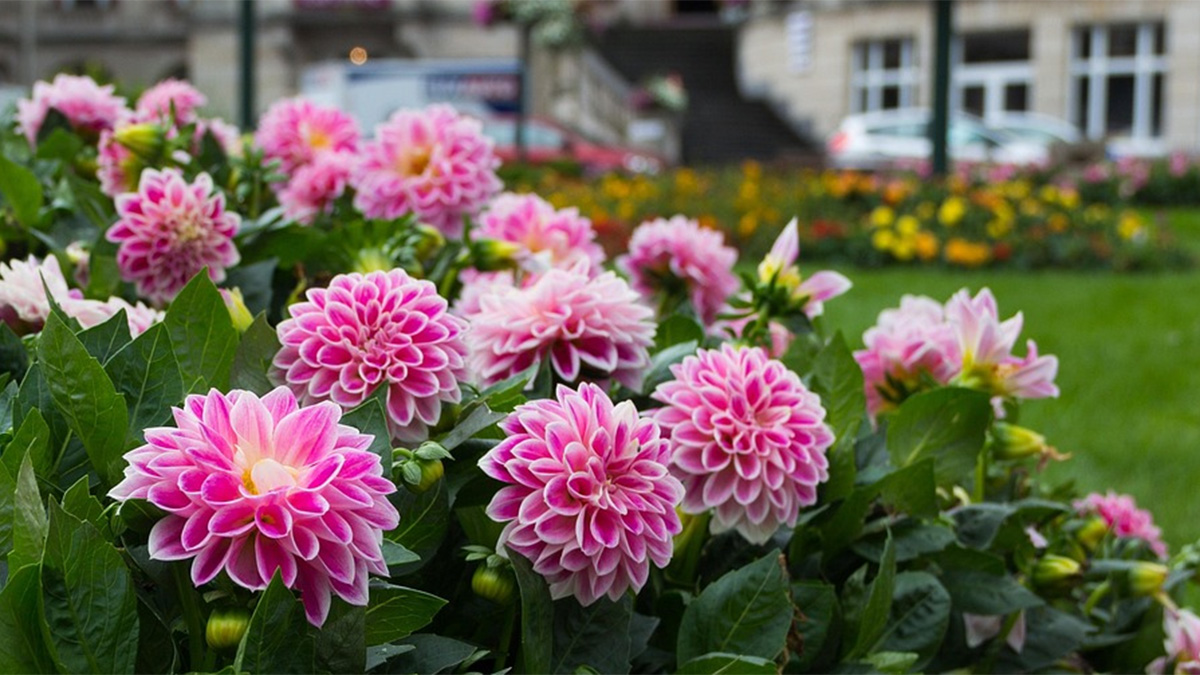Expert Tips and Tricks for Growing Gorgeous Dahlias

Dahlias are one of the most rewarding flowers to grow, offering vibrant blooms in a wide range of colors and forms. While they’re not difficult to grow, a few expert tricks can make a big difference in how full, healthy, and long-lasting your dahlias turn out. Whether you’re growing them for garden beds or cut flower displays, these tips will help you get the most out of every bloom.
Choosing the right dahlia varieties
Dahlias come in a wide range of forms, from large dinnerplate blooms to compact pompons. Choosing the right variety depends on your garden space, climate, and whether you’re growing for cutting, containers, or borders. Beginners may want to start with reliable favorites like ‘Bishop of Llandaff’ or ‘Thomas Edison’ for strong performance and vibrant color.
When and where to plant
Dahlias should be planted outdoors only after the danger of frost has passed, typically in late spring. They need a full sun location that receives at least six hours of direct light daily. In cooler regions, starting tubers indoors a few weeks early can give you a head start on the season.
Preparing the soil for success
Dahlias thrive in loose, well-draining soil with a neutral to slightly acidic pH. Mixing in compost or aged manure improves soil structure and provides nutrients for strong growth. If your soil holds too much moisture, consider adding sand or planting in raised beds to improve drainage.
Planting dahlias correctly
Plant dahlia tubers horizontally about four to six inches deep, spacing them 18 to 24 inches apart depending on the variety. Make sure the “eye” of the tuber is facing upward. Avoid watering until green shoots appear, as early moisture can cause the tuber to rot.
Watering and feeding for optimal growth
Newly planted dahlias only need minimal watering until growth is visible. Once established, water deeply two to three times per week, depending on your local weather and soil conditions. Feed monthly with a low-nitrogen fertilizer to encourage more blooms and less leafy growth.
Staking and supporting tall varieties
Many dahlia varieties grow tall and require support to keep their stems upright and flowers off the ground. Use a single stake, tomato cage, or a grid system depending on the size and number of plants. Install supports at planting time to avoid damaging roots later.
Pinching and deadheading for more blooms
Pinching back the central stem when the plant is about 12 inches tall encourages bushier growth and more flowers. Removing spent blooms throughout the season helps redirect energy into new buds. Regular deadheading also keeps plants looking tidy and prolongs the flowering period.
Common problems and how to avoid them
Dahlias are vulnerable to aphids, earwigs, slugs, and spider mites, especially in warm, humid conditions. Check plants regularly and use neem oil, insecticidal soap, or hand-removal as needed. To prevent fungal issues like powdery mildew or stem rot, plant with enough space for airflow and avoid overhead watering.
Cutting and arranging dahlias
Cut dahlias in the early morning or late evening when the stems are hydrated. Select blooms that are fully open, as they do not continue to open after cutting. Place stems immediately into warm water and let them condition in a cool room for several hours before arranging.
End-of-season care and overwintering
After the first frost blackens the foliage, cut stems back to a few inches above soil level and dig up the tubers carefully. Allow them to dry for a few days, then store them in a cool, dry, frost-free location in peat moss or sawdust. In USDA zones 8 and above, tubers may be left in the ground if soil drains well and does not freeze, though results can vary year to year.
Conclusion
With the right care and a few expert techniques, dahlias can deliver an unforgettable display from midsummer through fall. From planting and pinching to feeding and storing tubers, each step plays a role in your plant’s success. Use these tried-and-true tips to enjoy a garden full of stunning, show-quality dahlias season after season.
